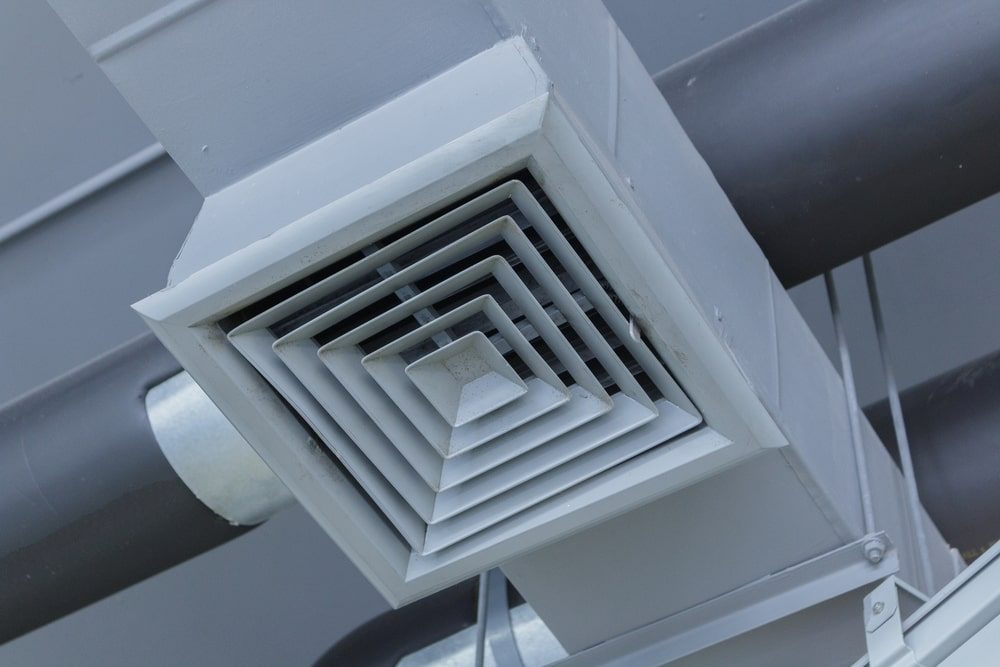Key Takeaways
- High humidity raises the “feels like” temperature and forces longer AC cycles to wring moisture from the air.
- Low airflow or dirty coils sabotage dehumidification, so maintenance and filters matter more than ever in muggy weather.
- Managing indoor sources of moisture and fixing duct and shell leaks reduces the load on your system.
- If certain rooms stay sticky, targeted solutions like a media filter upgrade, duct fixes, or a dedicated dehumidifier can help.
- These points set the stage for smarter settings, lower bills, and steadier comfort when the air turns heavy.

Virginia’s summer humidity does more than make the air feel sticky, it directly affects how your HVAC system works. High indoor moisture levels can cause longer cooling cycles, uneven temperatures, and added strain on parts. Understanding this humidity-HVAC connection helps homeowners across Charlottesville and Central Virginia control comfort, lower energy use, and prevent costly repairs.
Why Humid Air Feels Hotter And Why Your AC Works Harder
Air conditioning cools and dehumidifies simultaneously. Warm indoor air passes over a cold evaporator coil, heat is removed, and water vapor condenses on the coil and drains away. The U.S. Department of Energy explains how AC equipment removes both heat and moisture, and why higher outdoor humidity lengthens run time to reach the same comfort level. If airflow is restricted or the coil is dirty, dehumidification suffers, and rooms feel clammy even when the thermostat hits its setpoint. One well-timed tune-up can restore coil performance and keep the condensate line clear, so moisture actually leaves the house instead of creeping back in.
How Humidity Stresses HVAC Equipment
Humidity is not just a comfort issue. Persistent moisture adds mechanical stress in several ways.
- Longer cooling cycles mean more hours on blower motors and compressors, accelerating wear.
- A saturated or dirty evaporator coil loses capacity and can let moisture re-evaporate into the airstream.
- High-humidity, high-return conditions combined with weak airflow can push coils toward icing, further reducing airflow and creating a vicious cycle.
- Condensate management becomes critical; a partially clogged drain can trip safety switches or spill water into the furnace or air handler.
Each of these problems is preventable with airflow checks, clean filters, and seasonal service that keeps coils and drains in shape.
Settings And Habits That Improve Summer Comfort
You do not have to overhaul your system to feel a big difference. Start with changes that help every day, and use EPA guidance on home ventilation as a reference for running exhaust fans and reducing indoor moisture sources.
- Use moderate thermostat setpoints and avoid bouncing the temperature up and down; steadier operation improves dehumidification.
- Run bathroom and kitchen exhaust fans long enough to clear steam after showers and cooking, so you are not adding moisture that the AC must remove later.
- Keep supply registers and return grilles open and unblocked, so the coil sees enough warm air to wring out moisture efficiently.
- Trim vegetation and clear debris around the outdoor unit so it can reject heat without straining.
These habits let your equipment do its job with less effort and fewer surprises on the hottest, stickiest days.
Duct Leaks, Attics, And Crawlspaces
Leaky ducts steal cool, dry air and pull hot, humid air into the system from unconditioned spaces. The result is longer cycles, higher bills, and rooms that never feel quite right. ENERGY STAR’s duct-sealing overview highlights how common leaks in attics and crawlspaces waste energy and undermine comfort. Sealing and balancing ducts, especially those running through attics or crawlspaces, restores capacity you already paid for and often fixes “one room is always sticky” complaints. We can check static pressure and temperature at strategic points to confirm whether ducts are the bottleneck during a standard service visit.
When A Dehumidifier Makes Sense
If your home stays humid even with a clean system, a dedicated whole-home dehumidifier can handle moisture removal, so the AC can focus on cooling. This is useful in tight homes with modest sensible loads, in basements that run damp, or in shoulder seasons when it is not hot enough for long AC cycles, but the air still feels sticky. A dehumidifier set to the 45 to 50 percent range can stabilize comfort without over-cooling the space. We can size, spec, and integrate one so it drains properly and works with your existing controls.
Signs Humidity Is Winning And What To Check First
When indoor moisture creeps up, your home tells on itself. Look and listen for these clues, then work through the quick fixes before calling for repairs.
- Supply registers sweat, walls feel cool and slightly damp, or you smell musty odors in closets or near supply trunks.
- Your return sounds louder than usual, and the rooms feel stuffy, a hint that the filter is loaded and airflow is down.
- The indoor unit runs long, but the house still feels sticky, often a coil, airflow, or duct issue, more than a thermostat problem.
- Start with a fresh filter, confirm all registers and returns are open, and clear the outdoor coil. If comfort does not improve, it is time for an airflow and coil inspection to get ahead of a mid-season failure.
Closing this loop early prevents bigger headaches later.
Maintenance Is Your Best Humidity Insurance
Preventive service is where humidity control and reliability meet. During a seasonal tune-up, we measure airflow and temperature split, clean indoor and outdoor coils, clear condensate drains, and confirm the system is dehumidifying as it cools. We also spot duct leaks, undersized returns, and safety issues before they turn into breakdowns.
If you like predictability, our maintenance schedule sets a spring visit for cooling and a fall visit for heating, so you are ready before the first muggy week and before the first cold snap. You can review what we check and get on the calendar from our AC maintenance page.
A Quick Homeowner Checklist For Muggy Weeks
When the forecast calls for steamy afternoons, run through this short list, so your system is set up to win.
- Replace or wash the filter if it is even borderline, and verify the size and MERV are correct for your unit.
- Open and clear all registers and the main return, so airflow is strong across the coil.
- Set bathroom fan timers so they run long enough after showers to purge moisture.
- Clear leaves, grass clippings, and mulch from around the outdoor unit so heat rejection stays efficient.
- Watch the condensate drain for steady flow when the AC runs, and call if you see overflow or shutoffs.
With these items handled, your system will remove moisture more effectively and maintain indoor comfort.
How We Helped Damyn Survive the Summer Heat
Here’s how we helped Damyn prepare for the brutal Virginia summer.
“This is the second summer where the expert service of the Otter Guys technicians has kept me and my home cool during the unrelenting heat. Many thanks!”
Read the review here.
When To Call The Otter Guys
If your home feels clammy even with a fresh filter, if the AC runs constantly, or if certain rooms never dry out, we can help. The Otter Guys will check airflow and coils, test ducts, tune the system for better dehumidification, and recommend targeted add-ons only when they make financial sense for your home. For a clean start, schedule AC maintenance or reach out on our contact page and tell us what you are noticing, then enjoy a summer that feels a lot less sticky.





